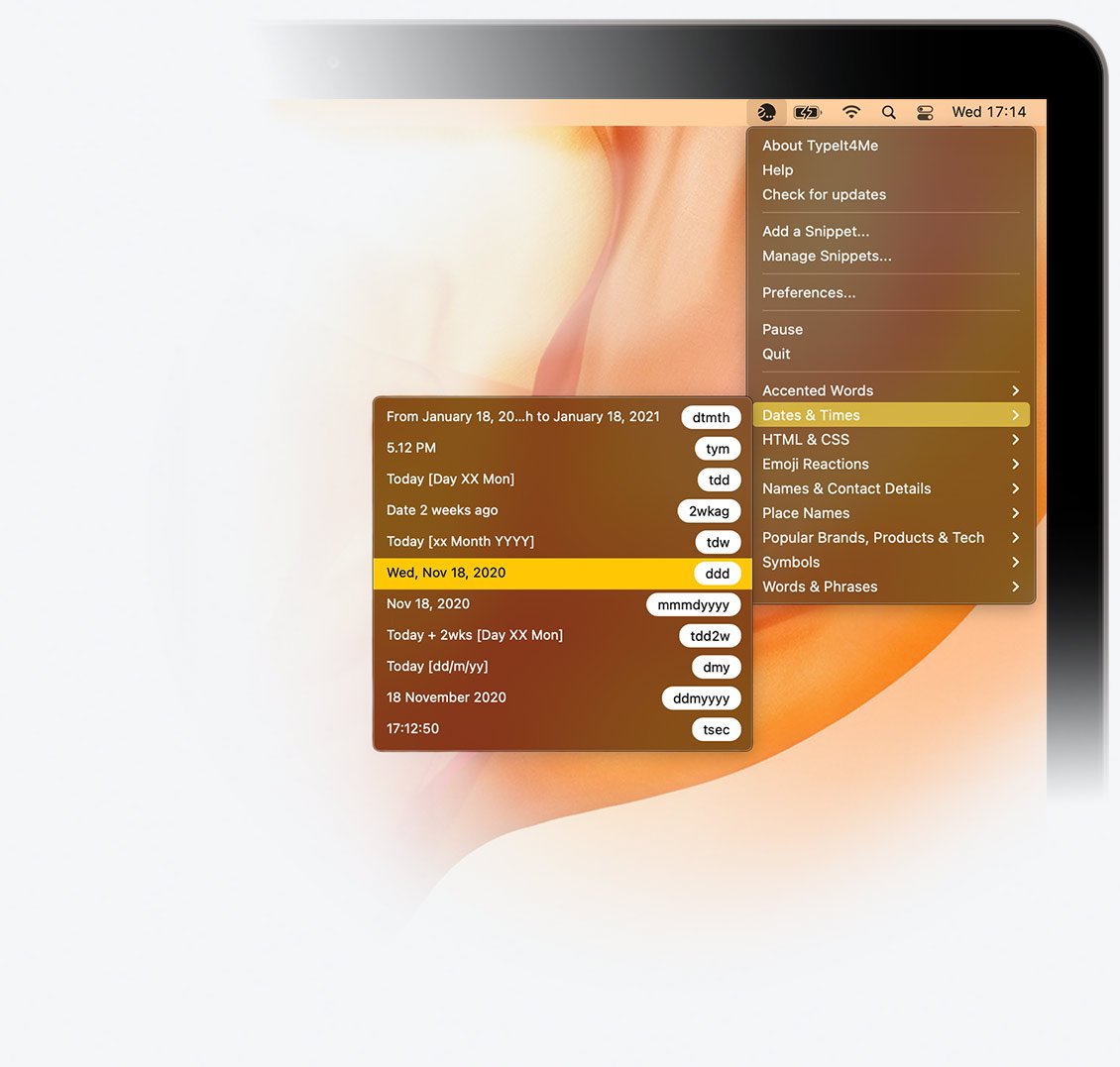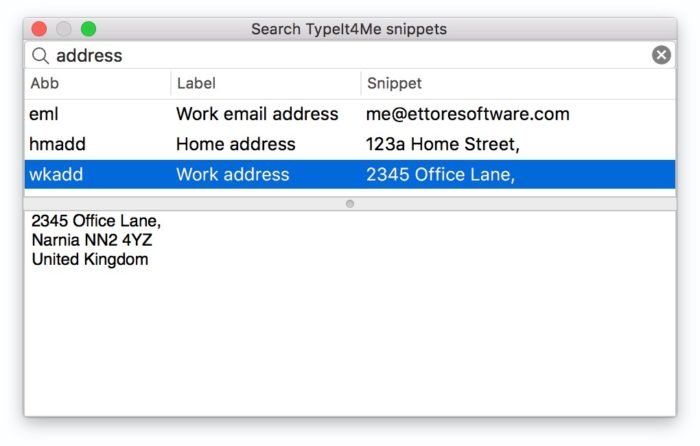

Note: Both the apps mentioned below require System Accessibility permissions in order to work as expected. Here, we’ll be mentioning two different apps, each targeted specifically for the two types of users. These are usually paid solutions, and include a variety of text replacement-based features (including abbreviation templates, collaborative abbreviations, etc.), that may appeal to both personal as well as business users.
#TYPEIT4ME SNIPPETS MAC#
If you want to use text replacement on Mac across all your installed apps, there are a few third party solutions worth looking into. Third-party Text Replacement solutions for macOS and OS X This will turn on Text Replacement on all supported apps.
Type the following command in the Terminal prompt and execute.ĭefaults write -g WebAutomaticTextReplacementEnabled -bool true. Open Terminal from Spotlight Search or Launchpad. If you want to enable the setting across all the supported apps, the following Terminal command will help you do so. But there might be a few in which it is disabled. This setting is usually turned on by default in most of the supported apps. Enable native Text Replacement in all supported appsĮnabling text replacements on Mac are strictly app-specific, that is, you can turn Text Replacements on or off for individual apps. Text replacements will automatically happen as you type. Once Text Replacement option is checked, you can type within a supported app using the shorthands that you have previously configured in System Preferences. Provided a particular Mac app supports text replacements, you can turn the feature on by going to the app’s Edit menu > Substitutions, and selecting Text Replacement. Note: Most of the built-in apps shipped along with macOS do support Text Replacements. If you can’t find “Substitutions” under the Edit menu of a particular app, it probably doesn’t support macOS’s native text replacement features. Once you have set up text replacements, you may use them throughout all the apps that include “Substitutions” under their Edit menu. Your Text Replacements have now been saved. Click on the Back button to navigate back to the main System Preferences page. Enter the actual phrase (the one you want to replace with) in the right “With” column. Enter the shorthand text (the one you intend to type) in the left “Replace” column. Click on the “+” sign at the bottom to create a new replacement. A list of saved text replacements will appear on the left, if you have any. Go to Apple Menu > System Preferences > Keyboard and click on the Text tab. To enable the native text replacement option on macOS, do the following: Enable native Text Replacement on macOS and OS X However, its usability is rather limited to a certain number of “supported” apps alone. Similar to iOS, the text replacement feature is natively available on all recent OS X and macOS releases. Native Text Replacement on macOS and OS X 5.1 Which Text Replacement option is best for you?. 
5 Applications of Text Replacement apps.4 Third-party Text Replacement solutions for macOS and OS X.3 Enable native Text Replacement in all supported apps.2 Enable native Text Replacement on macOS and OS X.1 Native Text Replacement on macOS and OS X.In this episode, we take a look at the newly released TextExpander 6 as well as some other alternative apps. These are just some of the options available using TextExpander and other text expansion utilities. Expand into images or formatted text, or use fill in snippets to prompt you to complete boilerplate text. Just type abbreviated keywords and have them expand into words, sentences, paragraphs or whole pages of text. Text expansion is one of the best ways to increase your productivity.






 0 kommentar(er)
0 kommentar(er)
